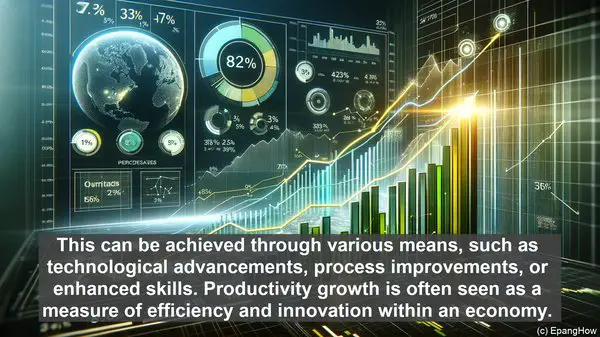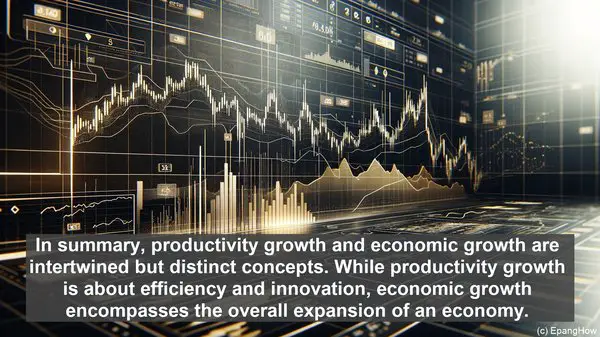Introduction: The Significance of Growth
Greetings, audience! Growth is a fundamental aspect of any economy, but it’s not a monolithic concept. Today, we’ll explore two key dimensions of growth: productivity growth and economic growth. While they may seem similar, they have distinct features and implications. Let’s dive in!
Defining Productivity Growth
Productivity growth refers to the increase in output per unit of input over time. It’s essentially about doing more with the same resources. This can be achieved through various means, such as technological advancements, process improvements, or enhanced skills. Productivity growth is often seen as a measure of efficiency and innovation within an economy.
Unpacking Economic Growth
On the other hand, economic growth is a broader concept. It encompasses the overall expansion of an economy, including factors like increased production, consumption, and investment. While productivity growth is a crucial component of economic growth, it’s not the sole determinant. Other factors, such as population growth, changes in government policies, and external factors like global trade, also play a role.
Interplay and Implications
The relationship between productivity growth and economic growth is intricate. Higher productivity growth can fuel economic growth by enabling more output and potentially higher living standards. Conversely, economic growth can create opportunities for productivity growth, as increased demand often drives innovation and efficiency. However, this relationship is not always linear or immediate. Various factors, such as resource availability, market conditions, or policy frameworks, can influence the outcomes.

Policy Considerations
Understanding the distinction between productivity growth and economic growth is crucial for policymakers. It helps them identify the drivers of growth and design targeted interventions. For example, if a country is experiencing sluggish economic growth despite reasonable productivity growth, the focus may shift to other factors like infrastructure development or market access. Similarly, if productivity growth is stagnant, policies may aim to foster innovation or skills development.

